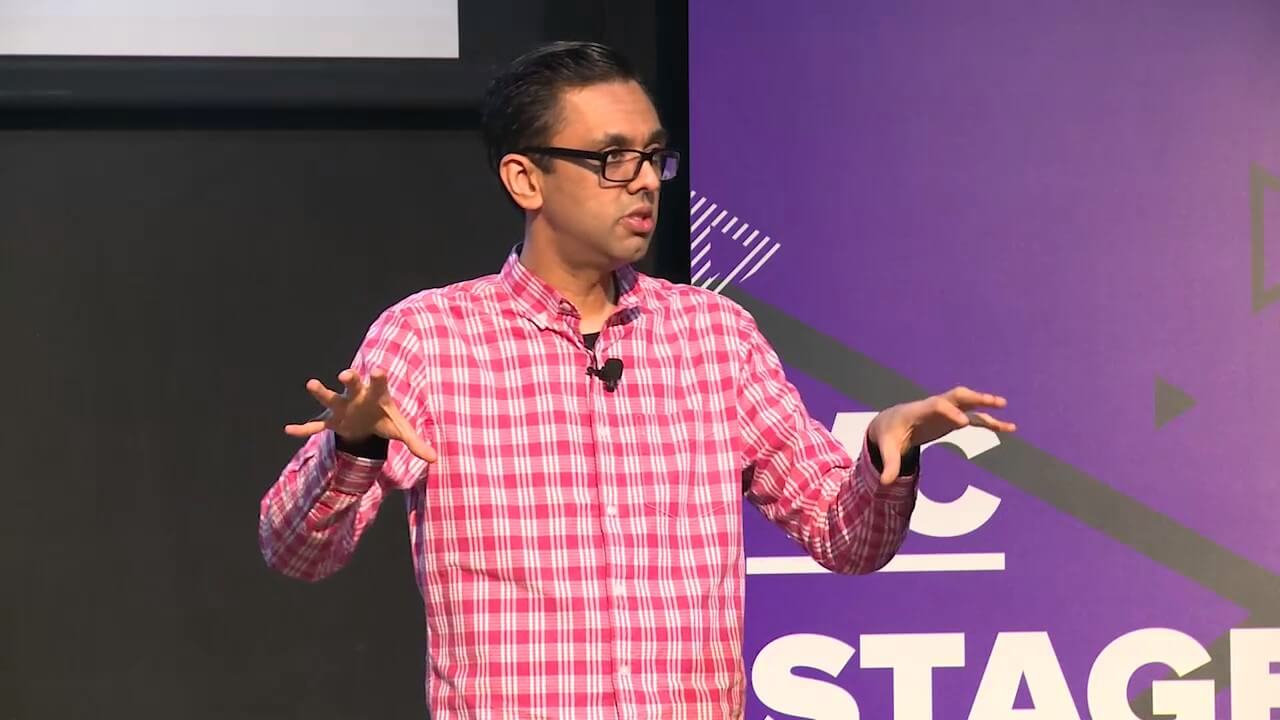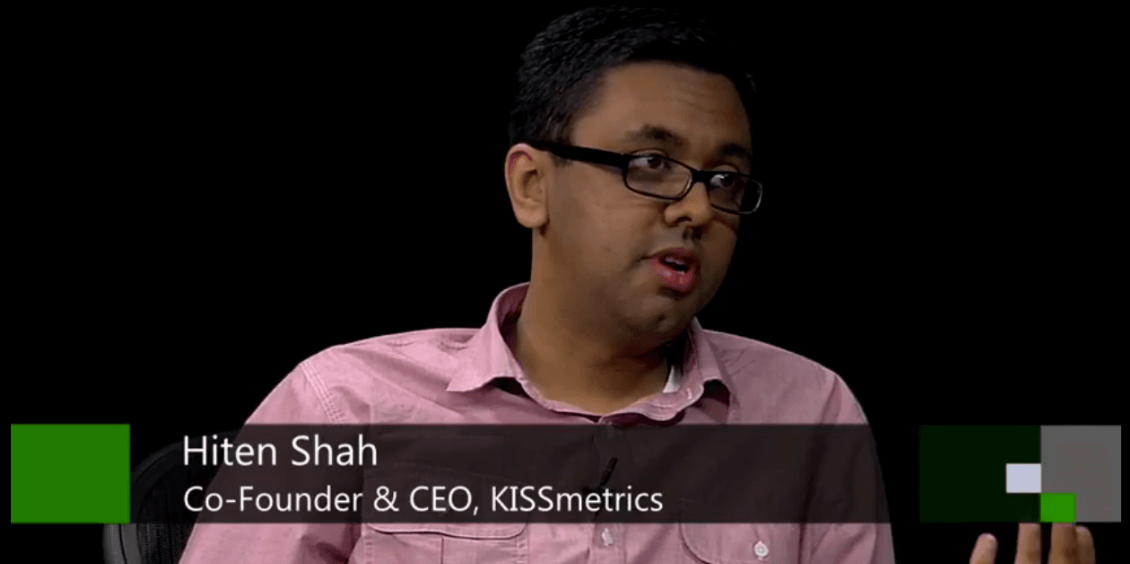Product leader Hiten Shah uses stories to identify customer needs

Written by Hiten Shah, Co-Founder at FYI, Product Habits, Crazy Egg, and KISSmetrics, for our ebook, The Path to Product Excellence: Stories and Advice From the Field.
Crazy Egg gave me the product bug. It also was the beginning of a strange, powerful revelation: that people don’t often understand what really motivates them to do something. So as a product manager, if you can identify what your customer really needs to solve their problems, then you’ll have an excellent product. I do this by using stories to seek out my customer’s emotional hotspots.
“People don’t often understand what really motivates them to do something.”
Realize there’s a difference between sentiment and utility
Back when I began Crazy Egg, it was difficult to track how people were actually using a website. Google Analytics was around, but people weren’t actually using it.
Google wasn’t very visual and was hard for most users to understand. People couldn’t read the charts or the tables of data. There were all kinds of inaccuracies. Clicks were miscounted. If two links on a page pointed to the same address, there was no way of knowing which one was doing better. Optimization was a pain.
People didn’t talk about this deficiency, but we realized it existed and decided to build something better. We created a heat map which showed the hot and cold zones of a website and that became Crazy Egg, our first successful product. What I realized then was that it was all about figuring out what problems our potential customers actually had, and solving them better than anyone else.
“What I realized then was that it was all about figuring out what problems our potential customers actually had, and solving them better than anyone else.”

Identifying customer needs using stories
These days I start off from the perspective: “Is it worth it?” “What is it?” and “Why?”
“Is it worth it?” means I look for opportunities that have tailwind, “is there some trend making this a growing problem or a market?” “Are enough people willing to use or pay for this product?”
Then I start asking, “What is it?” meaning I start trying to identify what the potential customer need is without yet worrying about what it is that I’m going to build.
You start with a really holistic view of things, then you look for the pain points. What are the most difficult problems people have or sets of problems they have? I really try to spend as much time and energy as possible on figuring this out. For a new product I’m working on right now, I just completed 51 interviews in 7 days. To me, it’s the most important part of the process. I’m looking for pain, looking at what problems people say they have, and then I’m also looking for stories (the “why”) that connect it all together.
Stories translate into emotion. What motivates a person’s behavior? What causes them to take action? I want to hear about failures and how people solved them; I want those moments when people were motivated to start solving a problem and stopped.
“I want those moments when people were motivated to start solving a problem and stopped.”
Positive experiences are important too. What was the precise moment that made someone hit renew? Emotional stories hint at potential solutions or potential tipping points in a user’s behavior. Discovering problems is great. But understanding what motivates someone to do something is even better.
Reviews of competing products are a great starting point. You look for patterns: what are the things that bother people the most? What do they love? What are they lukewarm about? At what point do people become so frustrated that they actually switch products?
Interviews are a crucial next step. But you can’t just listen to people, you have to listen actively. When you’ve heard about a problem, for example, keep going. Ask your customers how they identified the solution that met that their needs. Get specifics. Most of them won’t have a specific solution. But if you talk to 50 people and five have a workaround, and say three of those five are using the same workaround, then you’ve got something much more valuable than just “this feature doesn’t work.”
Again, this all goes back to emotion. You find those few people who really invested their time and energy into a product (good or bad) and pry out those significant nuggets of knowledge they’ve come up with, or figure out what exactly they’re reacting to and why.

Turning 51 interviews into an MVP
With Crazy Egg, what was surprising was how many people said they liked Google Analytics but weren’t using it. We realized after talking to dozens of people and seeking out their emotional stories, that Google Analytics wasn’t actually helping them improve their sites.
After the interviews, I spend my time analyzing. So those 51 interviews I mentioned doing for my latest product turn into about 24 hours of analysis: i.e., from 163 pages of interview notes to a single twenty-page document. I don’t use hacks either; I don’t use machine learning or tagging; I read like a human and try to find trends. What I’m looking for are emotions, the emotional points, what makes people go ‘that made my life easier’ or ‘I don’t care for that.’
After we’ve gathered all that information, we’ll put together a tiny team and create a minimum viable product (MVP) that takes less than 7 days to create. In order to validate the solution to a set of problems we discovered during interviews in the document space, we created an MVP for FYI in 5 days. FYI lets you find your documents in 3 clicks or less across all the document apps you use. The MVP connected to G Suite, Dropbox, Box, and OneDrive and let you see search results across all of those tools in one interface. We were able to learn in a matter of days what would have normally taken months to discover.
“We were able to learn in a matter of days what would have normally taken months to discover.”
With Crazy Egg, even though we hadn’t articulated our process as succinctly as we do now, we took the time to research the risks involved and interviewed potential users. But there was plenty more we could have done: for example, we didn’t think about strategy and made an early decision to get rid of our free plan, which helped in the short-term with revenue but inevitably hurt our growth. Our process now ensures we don’t make these key strategic mistakes.
Identify the customer problems and needs, find the stories, and figure out how to elicit the emotion so you can tease out what matters and what doesn’t. That’s what this process is really all about. It’s too easy to build lots of features. You want to find what matters most and double down on that. The big lesson here is that it’s critical for your product’s success to learn as fast as you can about what pain people have and build your product to solve that pain without any distractions.
. . .
This post is an excerpt from our ebook, The Path to Product Excellence: Stories and Advice From the Field. Get your copy now for more valuable insights from product management thought leaders.
Follow Hiten Shah on Twitter.





![The CPO’s Blueprint for Annual Planning: An Opportunity to Drive Change [Part 3]](https://www.productboard.com/wp-content/uploads/2024/11/strategy-blueprint-560x293.png)
